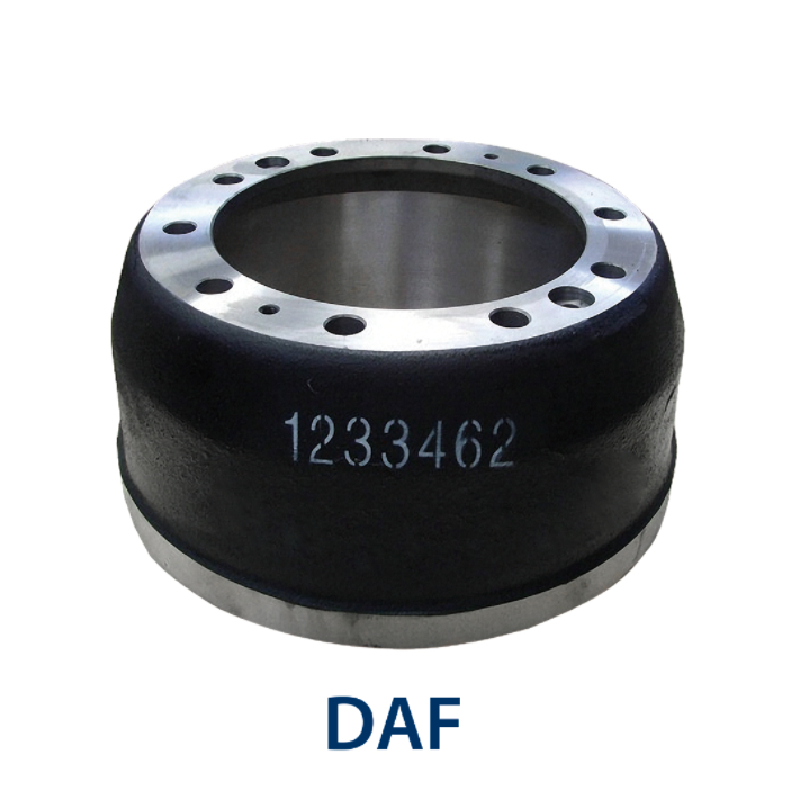Jul . 27, 2024 03:24 Back to list
Understanding the Benefits and Design of Finned Brake Drums for Enhanced Vehicle Performance
The Importance of Finned Brake Drums in Automotive Engineering
In the realm of automotive engineering, safety and performance are paramount, particularly when it comes to braking systems. One innovative solution that has gained traction in recent years is the use of finned brake drums. These specialized components are designed to enhance heat dissipation, thereby improving the overall efficiency and safety of braking systems in various vehicles.
What are Finned Brake Drums?
Finned brake drums feature a series of attached fins or ridges that increase the surface area available for heat dissipation. When brakes are applied, friction between the brake shoes and the drum generates heat. This heat can lead to brake fade, where the brakes become less effective due to overheating. Finned brake drums address this problem by allowing heat to escape more efficiently, ensuring that the braking system maintains its performance under rigorous conditions.
The Need for Heat Dissipation
Heat management is a critical aspect of brake performance. Under heavy braking conditions, such as during emergency stops or in hilly terrains, traditional brake drums can heat up quickly. When temperatures exceed optimal ranges, the risk of brake fade increases significantly. This can be particularly dangerous in situations where quick deceleration is essential for safety. Finned brake drums mitigate this risk effectively by providing additional cooling through increased airflow around the surface of the drum.
Enhanced Performance and Safety
The advantages of finned brake drums extend beyond mere heat dissipation. By maintaining a more stable operating temperature, these drums help to ensure consistent brake performance over a wide range of driving conditions. This reliability is particularly important for commercial vehicles that operate frequently under heavy loads or in stop-and-go traffic. Finned brake drums not only contribute to drivers’ safety but also help reduce maintenance costs by extending the lifespan of the braking system.
finned brake drums

Design and Application
The design of finned brake drums involves careful engineering to balance weight, strength, and thermal efficiency. Manufacturers use materials that can withstand high temperatures while minimizing weight to enhance vehicle performance. This is especially critical in performance vehicles where every ounce counts. Finned brake drums can be found in a variety of applications, from passenger cars to heavy-duty trucks and even in racing vehicles, showcasing their adaptability to different driving conditions and requirements.
Environmental Considerations
As the automotive industry shifts towards more sustainable practices, the efficiency of brake systems taking center stage. Finned brake drums contribute to reducing overall wear and tear on braking components, which in turn minimizes waste and resource consumption. By lowering the frequency of brake replacements, manufacturers can help reduce the environmental impact associated with automotive maintenance.
Conclusion
Finned brake drums represent a significant advancement in automotive braking technology, providing enhanced heat dissipation, improved safety, and better performance across a variety of applications. As vehicle performance standards continue to rise, innovations such as finned brake drums will play a pivotal role in ensuring the safety and efficiency of braking systems. For engineers and manufacturers, embracing such technological advancements not only improves vehicle performance but also enhances driver confidence on the roads, contributing to overall road safety in our increasingly mobile world.
In summary, the integration of finned brake drums in vehicles is a testament to the continuous evolution of automotive technology, aiming to provide safer and more efficient transportation for everyone.
-
ROR Web Development: Build Fast, Scalable, Secure Apps
NewsAug.17,2025
-
Scania Brake Drums: OEM Quality for Optimal Safety & Durability
NewsAug.16,2025
-
R.V.I: Advanced Remote Visual Inspection for Precision
NewsAug.15,2025
-
Discover HYUNDA: Innovative Vehicles, Equipment & Solutions
NewsAug.14,2025
-
R.V.I: Unlock Advanced Insights & Real-time Performance
NewsAug.13,2025
-
Kamaz Brake Drum: Durable & Reliable for Heavy Duty Trucks
NewsAug.12,2025
